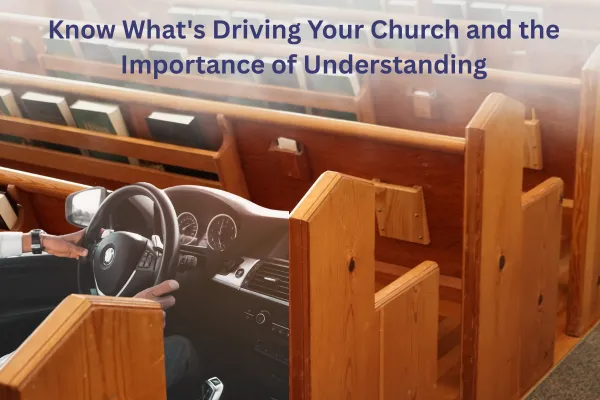
Know What's Driving Your Church and the Importance of Understanding
What is the fuel that drives your church day in and day out? What values does your church hold in high regard? What are the documented and even unspoken rules that determine how decisions are made? How is planning and calendaring done in your church? Knowing the answers to these and other questions can help you determine what the primary drivers are and your church’s trajectory. Understanding and identifying these key leadership concepts will help you become a more effective and efficient leader.
While some may be familiar with the concept of the life cycle of a church, it is one of the most underutilized leadership tools. Having a deeper understanding and appreciation for this resource is key for course-correction, revitalization, and ministry fruitfulness. Let’s dive into a quick overview to better understand and utilize this vital ministry tool.
In the life cycle there are stages of organizational life that start at birth, peaks at adulthood, and ends in death. Birth through adulthood are organizational life stages resulting in growth, sustainability, and vitality. The life stages of maturity through old age into death represent decline and decreasing missional effectiveness. An organization can have multiple life cycles. In other words, continual rebirth is essential to an on-going organizational lifespan. Without new life cycles, the natural order of life will result in organizational death. The ideal time to create a new life cycle is at adulthood. But because it feels counterintuitive to leaders at this life stage, most organizations don’t identify or launch a new life cycle until the negative effects of decline are felt.
In addition to the life stages, there are four key elements to understand about organizational life cycles. Those elements are vision, relationships, programs/ministries, and structure. During the various life stages, these four elements develop, drive, and shape the organization differently. Let’s examine these four elements more closely.
Vision is how the organization lives out its purpose. The purpose or mission of the church is to make disciples. The vision identifies how the church is living out God’s preferred future in this current season as disciples are made. Vision provides energy, momentum, excitement, and legitimizes leadership. Vision is a key driver in the growing life stages (birth through adulthood).
Relationships refer to the internal and external relational methods, intentions, and emphasis of the congregation. When new (external) relationships are the primary relational driver, the congregation is growing. When the primary relational drivers are internal (caring for those already gathered inside the church), the church is typically in decline.
Programs and ministries are the methods used to engage people in ministry. When programs and ministries support and align with the vision, the church is typically growing. When program, ministry, and event decisions and planning are highly driven on history, routine, or insider preferences, the church is likely in one of the declining life cycle stages.
Structure refers to a church’s financial resources, grounds and facilities, calendaring/planning, and the methods decisions are made. While structure is a necessity, when it becomes the primary driver, the church is in decline. When structure provides the needed, agile support for organizational health, the church is typically on the growth side of the life cycle.
A recommended best practice is for the leadership board (preferably at the annual strategic ministry planning retreat) to identify where the church is in the life cycle. What’s the primary driver? What have they noticed or observed to bring them to this conclusion? What life cycle stage is the church currently in? What course of action or correction is needed?
Simply naming the current church life stage is helpful, but doesn’t represent the full leadership response needed. Being able to identify the elemental drivers is essential. Even more critical is to determine what kind of course correction is needed to avoid decline. Taking bold, intentional, and courageous steps for course correction or to create new life cycles when needed is imperative. Knowing when the discernment of God’s new preferred future (vision) is needed to create a new life cycle is key for leadership. Alignment and leverage of resources to the new congregationally-discerned vision is the crucial next step.
How is your leadership using the church life cycle as a leadership tool? When was the last time leadership did an intensive life cycle analysis of your church? What might you discover in this analysis? How might the church, community, and Kingdom benefit from understanding and utilizing this tool? For more information and resources, check out this on-demand webinar.

